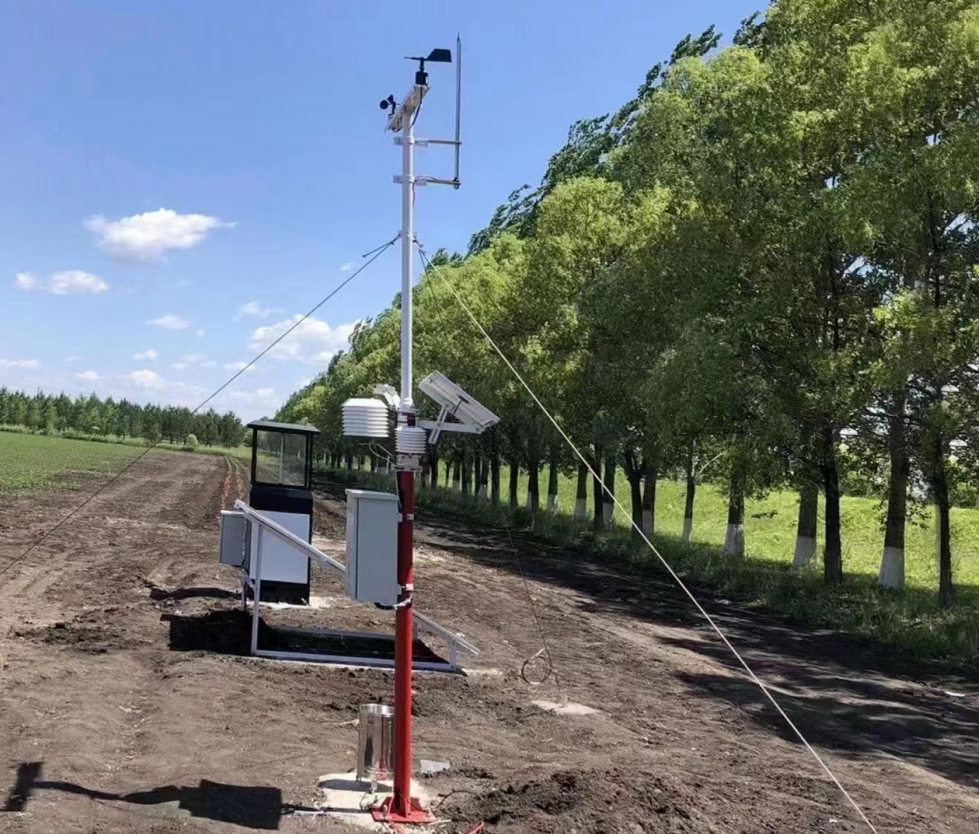

— Blogs —
—Products—
 Consumer hotline +8618073152920
Consumer hotline +8618073152920 WhatsApp:+8615367865107
Address:Room 102, District D, Houhu Industrial Park, Yuelu District, Changsha City, Hunan Province, China
Product knowledge
Time:2025-11-26 21:53:05 Popularity:93
The NiuBoL Farmland Microclimate Weather Monitoring Station is a high-precision monitoring system designed specifically for agricultural production and scientific research. It collects real-time microclimate parameters and soil environmental data within fields. The system integrates multiple sensors for air temperature & humidity, soil temperature & humidity, light intensity, wind speed & direction, and rainfall, helping farmers scientifically manage crop growth, optimize irrigation and fertilization schedules, prevent pests and diseases, and improve both yield and quality.
It is suitable for open-field crops, greenhouses, orchards, ornamental flowers, and research institutions, providing reliable data for precision agriculture and intelligent irrigation.
High-sensitivity sensors collect air and soil temperature/humidity in real time. Soil sensors (NBL-S-TM or NBL-S-THR) measure soil dielectric constant to calculate true moisture content, unaffected by soil type, fertilizer, or metal ions, ensuring stable and accurate data. Air data helps analyze transpiration and pest/disease risk.
Photosynthetic photon flux density (LUX or PAR) is measured to guide planting density, shading, or supplemental lighting decisions.
High-precision mechanical or ultrasonic sensors track wind effects on lodging, leaf damage, and evaporation, supporting windbreak design and machinery scheduling.
The NBL-W-RS rain gauge records rainfall amount, intensity, and duration in real time, supporting automatic alerts and irrigation strategy adjustments.
Supports RS485, LoRa, 4G, and 5G communication. Data undergoes calibration, outlier filtering, and long-term storage for research and decision-making.
- Host Controller: Core unit for data acquisition, processing, storage, and communication
- Air Sensor Module: Measures air temperature, humidity, and light intensity
- Soil Sensor Module: Multi-point deployment for soil temperature, humidity, and moisture
- Wind Speed & Direction Sensor
- Rain Gauge: Tipping bucket or radar type
- Power System: Solar panel + lithium battery for continuous operation
- Communication Module: Enables remote monitoring, data upload, and alarms
Measurement combines non-contact (air/light) and contact (soil probe insertion) methods. Soil sensors can remain buried long-term with real-time data transmission.

- Avoid buildings or tall vegetation that block sensors
- Ensure representative soil sampling across field zones
- Mount wind sensor at ≥2× crop canopy height, clear of obstacles
- Open fields: 1 point per 1–2 hectares
- Orchards/greenhouses: 1 point per row or every 5–10 trees
- Insertion depth: 15–30 cm (root zone)
- Secure host on concrete base or steel pole (windproof, lightning-proof, animal-proof)
- Orient light sensor skyward, align wind vane correctly
- Recommended: solar + lithium battery backup
- Test data upload stability
- Clean sensors quarterly
- Calibrate soil sensors every 6 months; inspect rain gauge annually

| Symptom | Possible Cause | Solution |
| No data / abnormal data | Damaged sensor / loose wiring / comm failure | Check wiring, replace sensor, restart module |
| Abnormal soil readings | Probe not fully inserted / air gaps | Re-insert and compact soil |
| Rain gauge not counting | Blockage or stuck bucket | Clean and lubricate bucket |
| Insufficient solar power | Expired battery / poor panel angle | Replace battery or reorient panel |
| Data delay or loss | Unstable network | Check signal or switch communication mode |
1. Open-field crops (wheat, corn, rice): Optimize irrigation based on soil moisture and weather
2. Greenhouses: Precise control of temperature, humidity, and light
3. Orchards: Guide irrigation and drainage for premium fruit quality
4. Ornamental flowers: Fine-tune environmental parameters
5. Scientific research & ecology: Long-term data for crop modeling and climate studies
6. Disaster prevention: Early warning of landslides/debris flows in high-risk areas
7. Urban greening: Precision irrigation for parks and roadside landscaping
- Small greenhouses/ornamental → Basic air + soil package
- Large fields/research → Full-featured with multi-point soil, complete meteorological suite, and remote platform
- Extreme environments → High-grade corrosion-proof and waterproof sensors
- Remote areas → Prioritize 4G/LoRa + cloud platform models
Works with sandy, loamy, clay, and most other soils with automatic compensation via dielectric measurement.
IP68-rated; suitable for long-term burial or submersion.
Yes—real-time transmission to cloud platform and mobile app via 4G/LoRa.
Regular calibration, automatic outlier detection, and filtering.
Operates from –40°C to +85°C; auto-protects during rain, snow, or high winds.
Yes—flexible addition of sensors for multi-point, multi-depth monitoring.

Low cost—mainly periodic cleaning; soil sensors have long lifespan.
Yes—supports Excel, CSV, etc., for direct use in analysis and modeling.
Yes—automatic alerts for abnormal soil moisture, temperature, or rainfall.
Simple—detailed layout and wiring guides provided; quick deployment with included brackets.
The NiuBoL Farmland Microclimate Weather Monitoring Station, with its high-precision sensors, stable data acquisition, flexible remote management, and wide applicability, serves as a core pillar for precision agriculture and smart farmland development. By providing real-time soil and atmospheric data, it empowers farmers and researchers to make scientific decisions, optimize irrigation and fertilization, prevent pests and diseases, and accumulate valuable long-term datasets—ultimately increasing crop yield, quality, and agricultural sustainability.
NiuBoL is committed to delivering one-stop farmland environmental monitoring solutions, providing reliable technical support to make agricultural management smarter, more efficient, and truly scientific.
Related recommendations
Sensors & Weather Stations Catalog
Agriculture Sensors and Weather Stations Catalog-NiuBoL.pdf
Weather Stations Catalog-NiuBoL.pdf
Related products
 Combined air temperature and relative humidity sensor
Combined air temperature and relative humidity sensor Soil Moisture Temperature sensor for irrigation
Soil Moisture Temperature sensor for irrigation Soil pH sensor RS485 soil Testing instrument soil ph meter for agriculture
Soil pH sensor RS485 soil Testing instrument soil ph meter for agriculture Wind Speed sensor Output Modbus/RS485/Analog/0-5V/4-20mA
Wind Speed sensor Output Modbus/RS485/Analog/0-5V/4-20mA Tipping bucket rain gauge for weather monitoring auto rainfall sensor RS485/Outdoor/stainless steel
Tipping bucket rain gauge for weather monitoring auto rainfall sensor RS485/Outdoor/stainless steel Pyranometer Solar Radiation Sensor 4-20mA/RS485
Pyranometer Solar Radiation Sensor 4-20mA/RS485
Screenshot, WhatsApp to identify the QR code
WhatsApp number:+8615367865107
(Click on WhatsApp to copy and add friends)
